 | J. M. Scribner - Mechanical engineering - 1849 - 286 pages
...29-3=26 ; and 26-M3=2. Ans. Gicen the Common Difference and the Extremes, to find the Number of Terms. Rule. — Divide the difference of the extremes by the common difference, and to the quotient add one. Example. — The first term of an arithmetical progression is 11, the last... | |
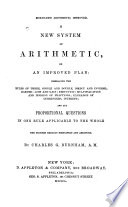 | Charles Guilford Burnham - 1850 - 350 pages
...When the first and last terms, and the common difference are given, to find the number of terms — RULE. Divide the difference of the extremes by the common difference, and the quotient will be 1 less than the number of terms. 10. If the first term of a series be 2, and the... | |
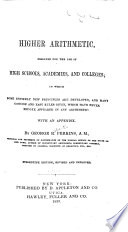 | George Roberts Perkins - Arithmetic - 1850 - 356 pages
...the first term, the last term, and the common difference, to find the number of terms, we have this RULE. Divide the difference of the extremes by the common difference, and to the quotient add one. EXAMPLES. 1. The first term of an arithmetical progression is 5, the last... | |
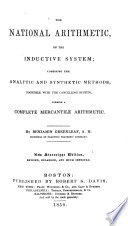 | Benjamin Greenleaf - Arithmetic - 1850 - 368 pages
...number of terms is one more than the number of differences ; therefore 8 -(- 1 = 9, the number of terms. RULE. — Divide the difference of the extremes by the common difference, and the quotient increased by one will be the number of terms required. 9. If the extremes are 3 and 45,... | |
 | Arithmetic - 1851 - 260 pages
...the last $1236 ; what is the common difference ? Ans. $24. NOTE 5. — To find the number of terms, divide the difference of the extremes by the common difference, and add 1 to the quotient. EXAMPLES. 1 In a series, whose extremes are 4 and 1000, and the common difference 12, what is the number of terms... | |
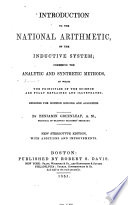 | Benjamin Greenleaf - 1851 - 332 pages
...than the number of differences ; therefore, 9 -j- 1 = 10, is the number of terms in this series. Hence the following RULE. — Divide the difference of the extremes by the common difference, and the quotient, increased by I, will be the number of terms required. EXAMPLES FOR PRACTICE. 1. If the... | |
 | Benjamin Greenleaf - Arithmetic - 1851 - 374 pages
...the sum of the extremes, and the product divided by 2, the quotient would be the sum of the series. RULE. — Divide the difference of the extremes by the common difference, and add I to the quotient ; multiply this quotient by the sum of the extremes, and half the product is the... | |
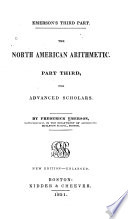 | Frederick Emerson - Arithmetic - 1851 - 342 pages
...miles travelled. PROBLEM in. The extremes and common difference given, to find the number of terms. RULE. Divide the difference of the extremes by the common difference, and add I to the quotient; the sum will be the number of terms. The difference of the extremes divided by the... | |
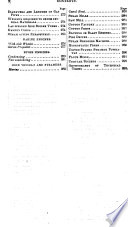 | Charles Haynes Haswell - Engineering - 1851 - 346 pages
...12X(13~-2)~78 J3ns. When the Common Difference and the Extremes are given, to find the Number of Terms. RULE.— Divide the difference of the extremes by the common difference, and add one to the quotienL EXAMPLE. — A man travelled 3 miles the first day, 5 the second, 7 the third,... | |
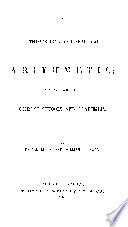 | Daniel Leach - Arithmetic - 1851 - 280 pages
...the basket? 314. To find the number of terms, when the extremes and common difference are known, — RULE. Divide the difference of the extremes by the common difference, and the quotient, increased by 1, ivill be the number of terms. This rule may be represented by the formulas,... | |
| |